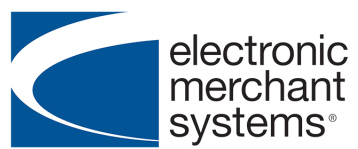Analyze automation in software development refers in order to the use of specialised tools and pieces of software to automate typically the execution of test out cases.

Test motorisation in software growth refers to the particular utilization of specialized tools and scripts in order to automate the setup of test instances. This method helps ensure the quality and even reliability of software by systematically validating the application functions needlessly to say. Automated assessment is particularly valuable regarding repetitive, time-consuming, plus resource-intensive tasks that would be improper to perform physically. Test automation is usually commonly used in various types of tests, like unit testing, integration testing, and even end-to-end testing. Here are dual pricing merchant services of program code test automation:
Evaluation Automation Tools:
Use specialized tools created for test robotisation. Examples include Selenium, JUnit, TestNG, Appium, and Cypress, and the like. The choice regarding tools is determined by elements such as the particular kind of application, coding languages used, plus testing objectives.
Unit Testing:
Automate the particular testing of particular person units or elements of the computer software to ensure each component functions as predicted. Frameworks like JUnit (Java), NUnit (. NET), and pytest (Python) are generally employed for unit tests.
Integration Testing:
Mechanize the testing involving interactions between different components or systems to assure they work together as planned. Tools like RestAssured for API tests or tools incorporated with specific frames (e. g., Planting season Boot for Java applications) are generally utilized.
End-to-End Testing:
Systemize the testing of entire workflows or perhaps scenarios that imitate real user relationships with the application. Selenium is extensively used for web-affiliated end-to-end testing, whilst tools like Appium are used for mobile applications.
Server scripting Languages:
Write check scripts using development languages suitable with regard to the application. Typical languages include Espresso, Python, C#, in addition to JavaScript.
Continuous Incorporation (CI) and Constant Deployment (CD):
Integrate test automation in to CI/CD pipelines to be able to automatically run assessments whenever there will be code changes. Well-known CI/CD tools such as Jenkins, Travis CI, and GitLab CI facilitate this integration.
Parallel Test Execution:
Run tests concurrently within parallel to reduce the overall screening time. This is usually crucial for maintaining fast feedback coils in agile advancement environments.

Data-Driven Tests:
Design tests in order to execute with several sets of type data, ensuring extensive test coverage. Tools and frameworks usually support data-driven tests.
Cross-Browser and Cross-Platform Testing:
Ensure compatibility across different web browsers and platforms by automating tests in order to run on different configurations.
Reporting plus Logging:
Generate comprehensive reports and firewood that provide ideas into test execution results, failures, and performance metrics.
Maintenance:
Regularly update and preserve automated test intrigue to adapt to be able to changes in the application code or functionality.
Implementing test out automation requires cautious planning, and this is important in order to achieve a balance between automatic and manual screening using the project's demands. Automated tests are valuable for repeating and regression tests, while manual assessment is usually necessary intended for exploratory and usability testing. The mixture of both methods, known as some sort of balanced test robotisation strategy, is usual throughout modern software advancement practices.
